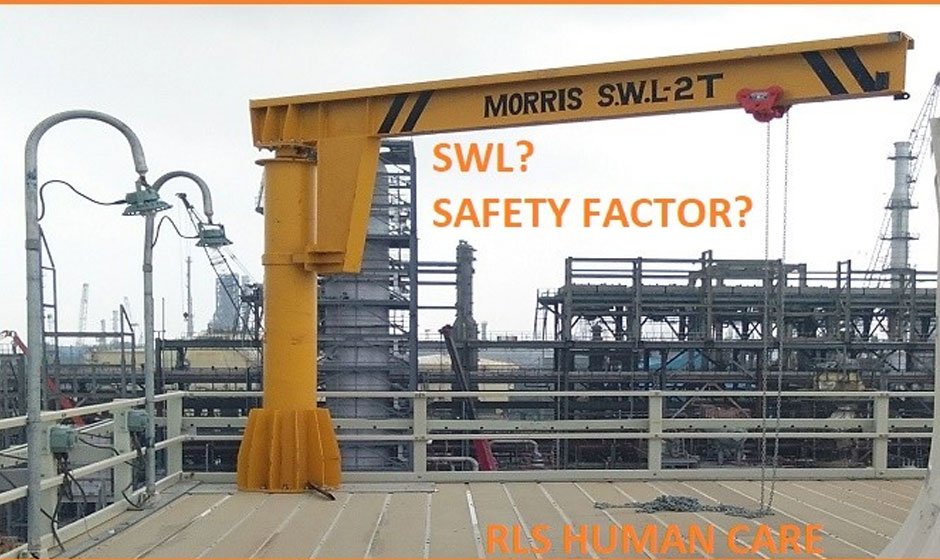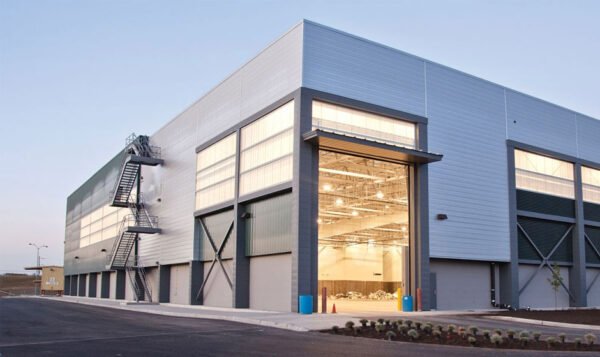What are the Safe Working Load Guidelines for Lifting Operations?

SWL, or Safe Working Load, is the maximum load or weight a lifting device, equipment, or structure can safely handle under specified conditions. It is a predefined weight limit that considers factors such as the lifting apparatus design, construction, and rated capacity. SWL is typically expressed in weight units, such as kilograms or pounds, and it is an essential specification for any lifting equipment.
Safe Working Load (SWL) is of utmost importance in lifting operations, as it is essential for the safety of workers, equipment, and materials involved in the process. This article delves into the definition of SWL, the various factors influencing its determination, and the importance of adhering to SWL limits.
This article will also highlight why an understanding of SWL is essential for anyone involved in lifting operations and how protecting personnel, equipment, and materials helps organisations comply and maintain operational integrity.
Factors Affecting SWL Determination
Several factors determine the safe working load for a particular lifting operation. These factors include:
- Equipment Specifications:The design and construction of lifting equipment significantly influence its SWL. Manufacturers provide SWL ratings based on the equipment’s engineering and structural integrity.
- Environmental Conditions:The environment in which lifting operations occur can affect SWL. Factors like wind, temperature, and humidity can impact the safe working load of lifting equipment.
- Material Properties:The properties of the materials being lifted, such as shape, size, and centre of gravity, are vital considerations in SWL determination.
- Rigging and Lifting Configurations:The configuration of rigging equipment, including slings, cables, and hooks, can affect SWL. Proper rigging techniques and designs are essential for safe lifting.
Importance of Adhering to SWL Limits
Adhering to SWL limits is paramount to ensure lifting operations’ safety. Failing to stay within the specified SWL can have severe consequences, including:
- Safety Risks:Exceeding SWL can result in equipment failure, accidents, injuries, or fatalities.
- Structural Damage:Overloading equipment or structures can cause damage, reducing their operational lifespan and incurring repair costs.
- Legal Consequences:Non-compliance with SWL limits may lead to legal liabilities and fines, mainly if lifting operations result in accidents or property damage.
- Insurance Implications:Insurance coverage may be compromised if lifting operations exceed SWL, leaving organisations liable for financial losses.
Factors Influencing SWL Determination
Determining a safe working load is a complex process that considers various factors to ensure the safe and efficient execution of lifting operations. These factors can be broadly categorised as follows:
Equipment and Machinery Specifications
- Design and Engineering:Lifting equipment’s design and engineering specifications are pivotal in SWL determination. Manufacturers provide detailed information regarding the SWL limits of their equipment based on engineering calculations and structural integrity.
- Rated Capacity:Each piece of lifting equipment is assigned a rated capacity, representing the maximum load it can safely handle. This capacity is determined during the equipment’s design phase and is fundamental to SWL determination.
- Maintenance and Inspection:The regular maintenance and inspection of lifting equipment are critical to ensure that it meets its specified SWL. Wear and tear, corrosion, and structural fatigue can reduce the SWL over time, making maintenance practices vital.
Environmental Conditions
- Weather and Wind:Environmental factors, such as wind speed, temperature, and humidity, can significantly affect SWL. Wind, in particular, can exert lateral forces on loads, potentially leading to instability and the need to lower the SWL during adverse weather conditions.
- Altitude and Location:The size and geographical location of the lifting operation can influence SWL due to variations in atmospheric pressure and other factors.
Material Properties
- Weight and Mass:The weight and mass of the lifted material are primary considerations in SWL determination. Heavier loads naturally require lifting equipment with higher SWL capacities.
- Shape and Size:When calculating the SWL, it is crucial to consider the load’s size and shape, as they can affect the weight distribution and centre of gravity. This is necessary to ensure that the lifting process remains stable.
- Material Strength:Different materials have varying strengths, and their structural properties can affect SWL. For example, the SWL for lifting steel beams may differ from that for lifting concrete blocks of the same weight.
Rigging and Lifting Configurations
- Rigging Equipment:The choice and configuration of equipment, including slings, cables, chains, and hooks, can affect SWL. Proper rigging techniques are essential to distribute the load evenly and prevent point-loading that could exceed SWL.
- Lifting Angles:The angles at which lifting equipment is used can influence the effective SWL. As the angle between the lifting equipment and the load increases, the SWL may decrease due to increased tension on the rigging components.
- Attachments and Accessories:Any attachments or accessories used in lifting, such as spreader bars or lifting beams, should be considered in SWL calculations. They can change the distribution of weight and affect the overall SWL.
Safe Working Load Calculation and Assessment
The calculation and assessment of the safe working load are fundamental steps in ensuring the safety and efficiency of lifting operations. This section covers the critical aspects of SWL determination, including:
Calculating SWL for Different Lifting Equipment
- Manufacturer’s Specifications:The manufacturer provides the SWL for most lifting equipment. It is essential to refer to the manufacturer’s specifications, which detail the equipment’s design, engineering, and rated capacity. These specifications serve as the baseline for SWL determination.
- Engineering Calculations:In some cases, especially for custom or specialised lifting operations, engineers may perform detailed calculations to establish the SWL. These calculations consider material strength, structural integrity, and load distribution.
- Load Charts:Lifting equipment, such as cranes and forklifts, often features load charts that provide SWL values for various configurations, including boom length, angle, and counterweights. Operators must consult these charts to determine the appropriate SWL for a given situation.
Conducting Load Tests and Inspections
- Load Testing:Periodic load testing is essential to verify that lifting equipment operates safely within its specified SWL. Load tests involve applying incremental loads to the equipment to ensure it can handle the intended weight without failure or deformation.
- Inspections:Regular lifting equipment inspections are crucial to identifying wear, damage, or signs of structural fatigue. Inspectors check for corrosion, cracks, loose bolts, and hydraulic system integrity. Any defects found must be addressed promptly.
- Non-Destructive Testing (NDT):NDT techniques, such as ultrasonic testing and magnetic particle inspection, may detect hidden flaws in critical components of lifting equipment.
Documentation and Record-Keeping
- SWL Certificates:Lifting equipment should come with SWL certificates provided by the manufacturer. These certificates specify the equipment’s SWL and other relevant information and should be readily accessible for reference.
- Load Test Records:Detailed records of load tests and inspections should be maintained. These records should include dates, results, necessary repairs or maintenance, and the names of individuals responsible for the tests and reviews.
- Compliance Documentation:In regulated industries, organisations may need to maintain documentation to demonstrate compliance with safety standards and regulations. This can include records of SWL calculations, inspections, and operator training.
Compliance with Regulatory Standards
Adherence to regulatory standards is paramount in lifting operations to ensure the safety of personnel, equipment, and the environment. There are various aspects of regulatory compliance, including local and international regulations, operator certification and training requirements, and there are consequences of non-compliance.
Local and International Lifting Operation Regulations
- Local Regulations:Different regions and countries often have regulations governing lifting operations. Governmental authorities or industry-specific agencies typically establish these regulations. They may include equipment standards, safety procedures, and permissible SWL guidelines.
- International Standards:Unlike local regulations, international standards establish a universal framework for safe lifting operations worldwide. Institutions such as the International Organisation for Standardisation (ISO) and industry-specific organisations issue guidelines and measures that can be implemented globally.
- Harmonisation Efforts:In some cases, efforts are made to harmonise local regulations with international standards to ensure a consistent approach to lifting safety. Harmonisation simplifies compliance for multinational organisations and promotes best practices.
Certification and Training Requirements for Operators
- Operator Certification:Many jurisdictions require lifting equipment operators to obtain certifications or licenses. These certifications demonstrate that operators have received proper training and have the necessary skills to operate equipment safely.
- Training Programmes:Training programmes for lifting equipment operators cover equipment operation, load handling, safety protocols, and emergency procedures. These programmes are typically designed to meet regulatory standards and industry best practice.
- Continuing Education:Operator certifications often require periodic renewal or continuing education to ensure that operators stay current with safety standards and best practice.
Consequences of Non-compliance
- Safety Risks:Non-compliance with lifting operation regulations can lead to accidents, injuries, and fatalities. Equipment failures or improper procedures can pose serious safety risks to operators and bystanders.
- Legal and Financial Penalties:Organisations and individuals found non-compliant with lifting regulations may face legal consequences, including fines, penalties, and liability for accidents or property damage.
- Operational Disruption:Non-compliance can lead to equipment downtime and operational disruptions. This can result in financial losses due to project completion and repair delays.
- Reputation Damage:A good safety record due to non-compliance can protect an organisation’s reputation and credibility. This can affect its ability to win contracts and partnerships.
- Insurance Implications:Non-compliance may lead to insurance coverage issues. Insurers often require compliance with safety regulations as a condition of coverage. Non-compliance could result in denied claims or increased premiums.
Conclusion
Safe working load guidelines are a cornerstone of lifting operations, ensuring the well-being of workers, equipment, and materials. Understanding the factors influencing SWL determination, conducting regular assessments, and adhering to regulatory standards is imperative for promoting safety and efficiency in lifting operations.
Operator certification, training, and meticulous documentation are essential elements in maintaining compliance and mitigating the consequences of non-compliance. To further enhance workplace safety, manual handling training course is paramount, emphasising the importance of proper handling techniques, reducing the risk of injury, and strengthening overall workplace safety.



